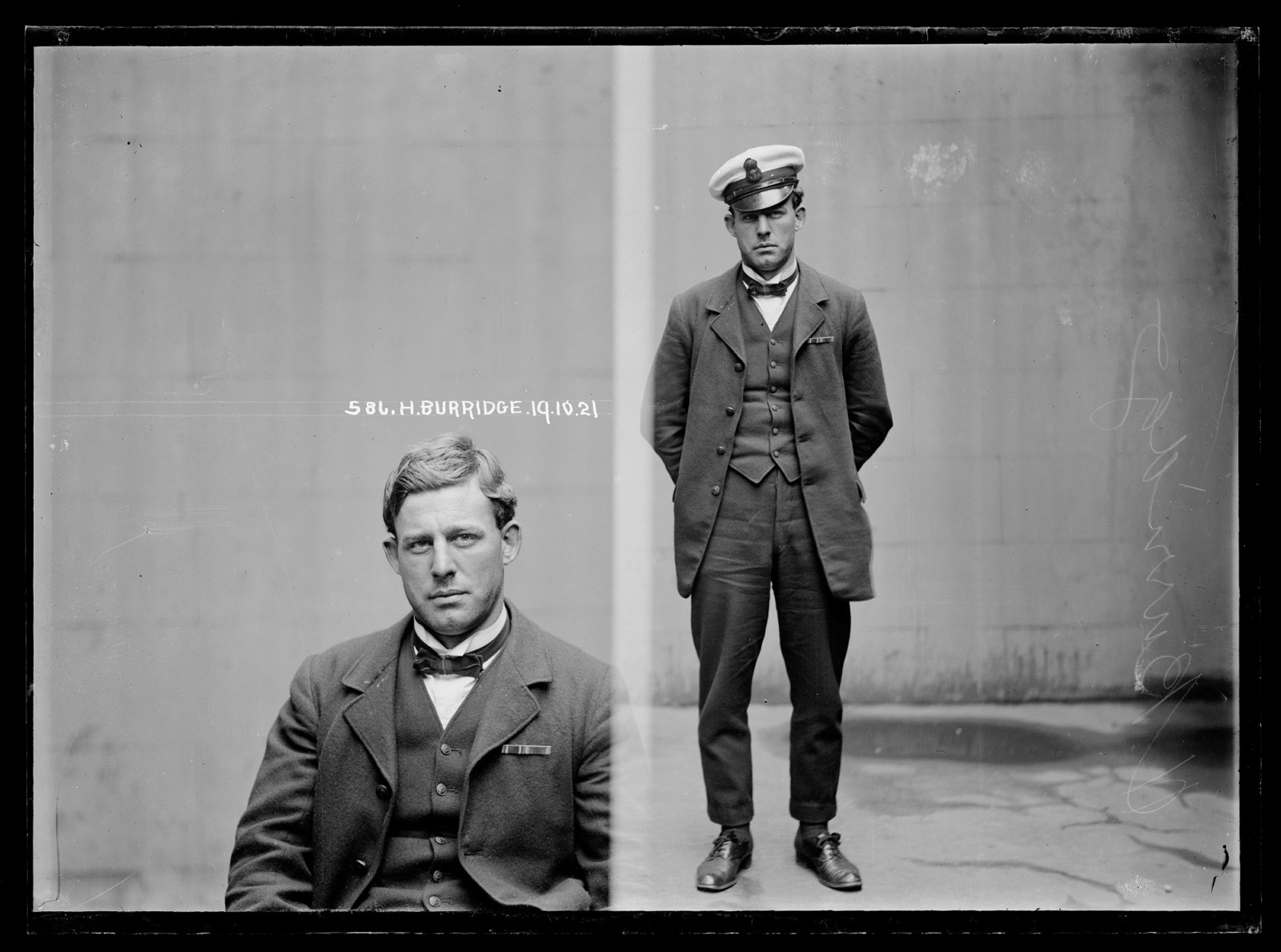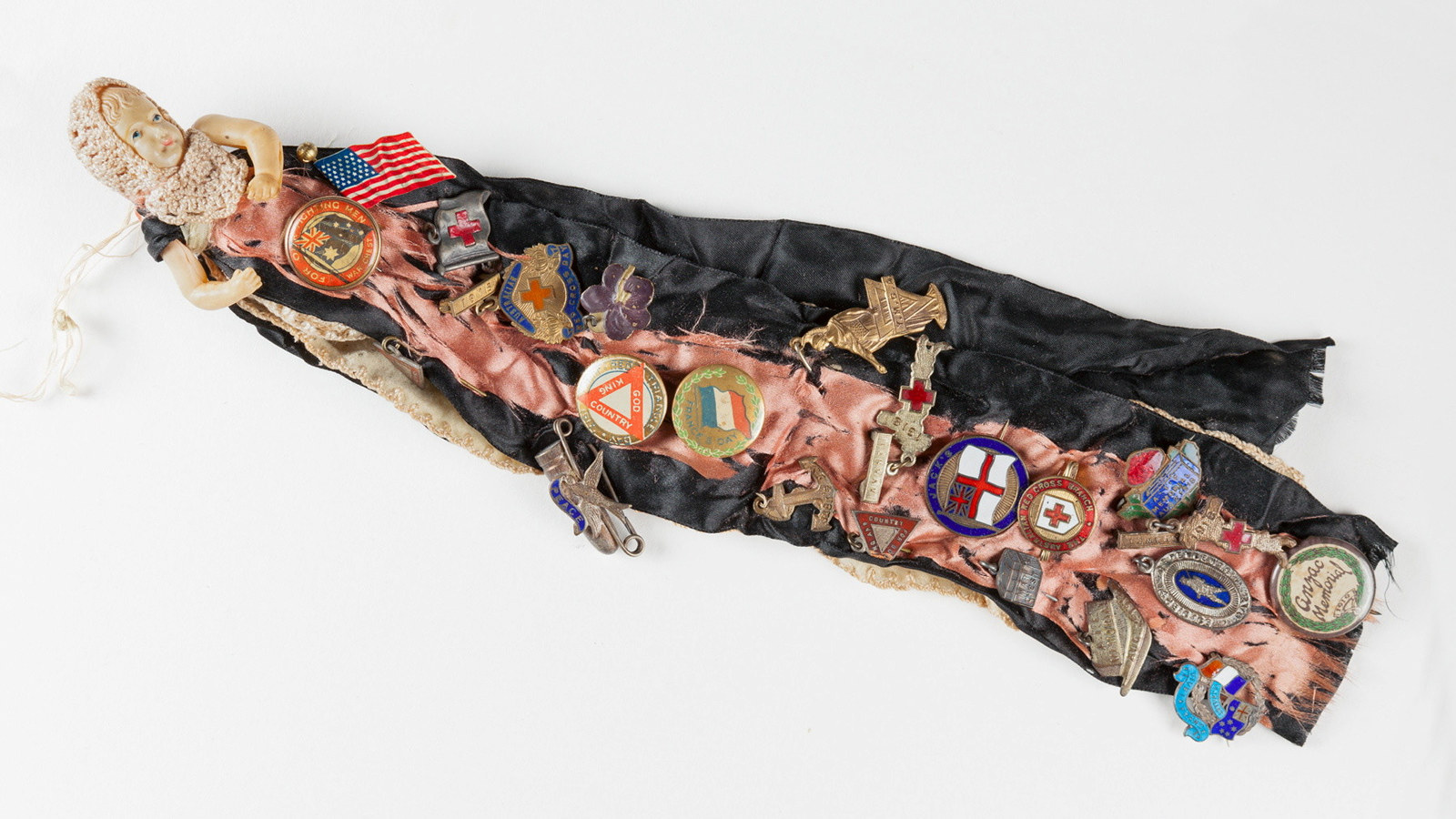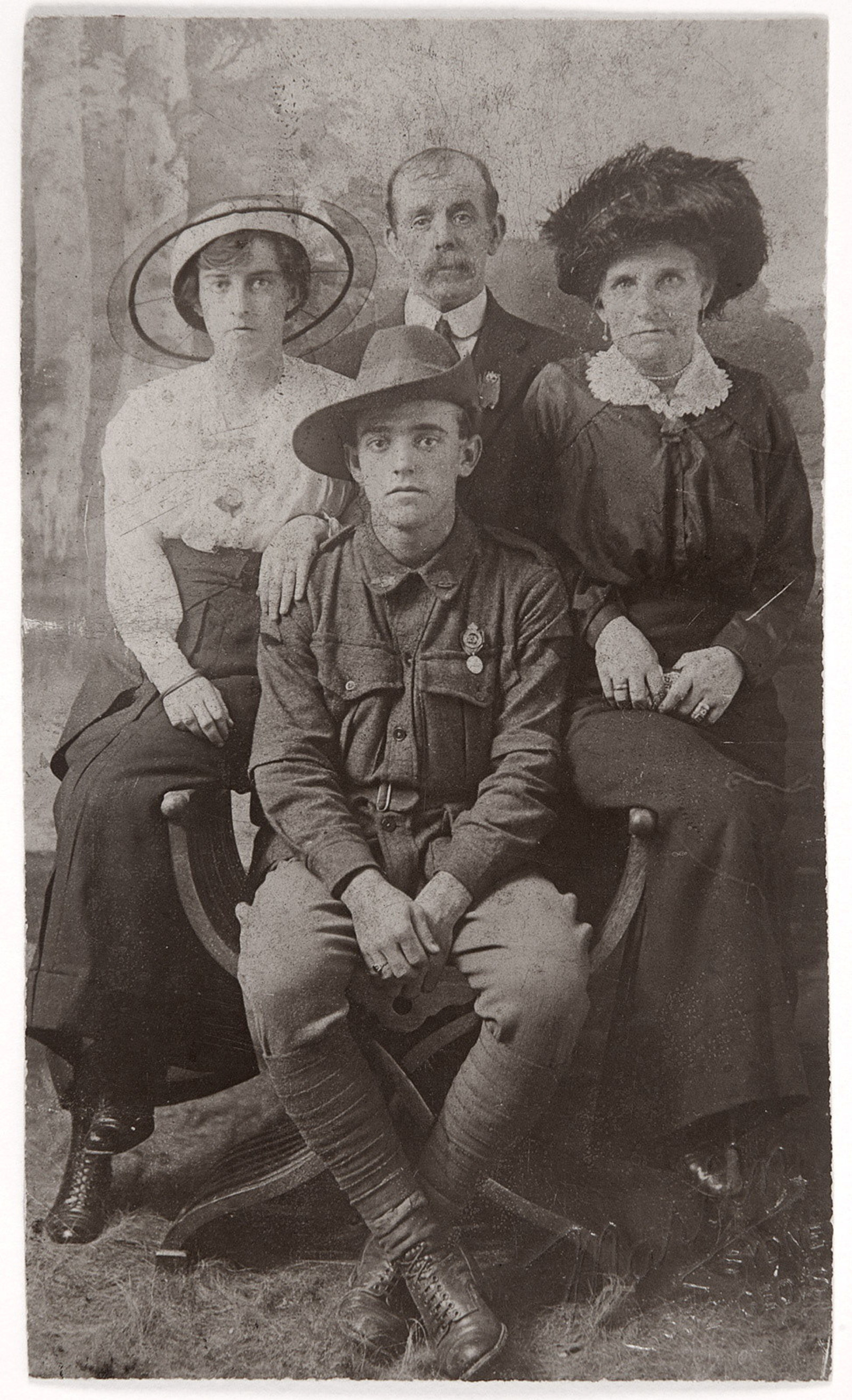Skint! Making do in the great depression
On Tuesday 29 October 1929 the Wall Street stock market in New York collapsed. Twenty-six billion dollars was wiped from the market, which continued to decline for the following three years.
Economic markets around the world were ruined. Income from Australian exports fell, local industries came to a standstill and unemployment rapidly increased. Australia had borrowed vast sums of money from overseas banks and would struggle to repay these debts.
Adding to economic woes, in May 1931 the federal Labor government and six state Premiers agreed to a 20% reduction in government expenditure, cuts to wages and pensions, and increased taxation. The agreement was a victory for orthodox economists and banks at the expense of ordinary citizens, who increasingly lost their jobs, their investments and their savings. Despite workers striking, their wages were reduced and working hours increased from 44 to 48 hours per week. By 1931, 30% of New South Wales trade unionists were unemployed.
Driven by conservative economic measures targeting debt and expenditure and shunning radical tactics that would sustain employment but drive up inflation, the Australian economy plunged into a long-lasting depression. Workers debated the idea that the economic hardships were created by greedy bankers and the ‘money-powered’ elite. As the power of trade unions and the Labor Party began to wane, disillusioned workers aligned themselves with the Communist Party. Fearing a revolution, supporters of the New Guard, a militant conservative group, swore to ‘foil any attempt … to foist socialisation on the people’. The New Guard were particularly outraged by the ‘radical’ economic decisions of Jack Lang, Labor Premier of New South Wales, commonly referred to as the ‘Lenin of Australia’.
Should men now go without the necessities of life in order that the international money ring should have its pound of flesh?
Labor premier Jack Lang1
Jack ‘the big fella’ Lang had consistently appealed to state and federal governments to put people before money. Fearful that the federal government would use money residing in the state bank to repay overseas debts instead of paying the salaries of New South Wales state employees, Lang took the bold action of withdrawing all the state’s funds and removing them to the Treasury building. This infuriated Lang’s federal colleagues and ignited fear among depositors, which resulted in a run on the state bank. Lang also defaulted on interest repayments on loans from British banks. As a result of his actions he was formally dismissed as Premier by the New South Wales Governor, Phillip Game, on 13 May 1932.
Conservative politicians united. The United Australia Party (UAP) was formed as a result of disillusionment and opposition to both the economic policies of the Scullin federal Labor government and New South Wales Premier Lang’s ‘mad financial schemes’. Its slogan was ‘All for Australia and the Empire’ and it offered traditional economic policies. The UAP won the subsequent federal parliamentary elections in December 1931 in a massive landslide victory for Joseph Lyons, who succeeded James Scullin as Prime Minister.
Not even citizens
We, representing the Aborigines of Australia [ask for] ... full citizen status.
activist Jack Patten, 1938 2
While workers protested angrily about job losses and politicians debated economic policies, there was one section of society that was politically disempowered from the outset. The voice and voting power of Aboriginal people were suppressed in the 1930s. Not even counted as part of the Australian population, Aboriginal people were denied citizenship rights, and were unable to access government pensions and food rations that would later become available to white Australians to help them through the tough times.
Aboriginal people who had been living independently but were now unemployed were forced to move onto closed government reserves under the intense surveillance of the Aborigines Protection Board. This meant the terrifying possibility of having their children forcibly removed from their care. Those who refused to enter the reserves took up residence in unemployment camps and along Sydney’s creeks and waterways, such as Salt Pan Creek and the Georges River, preferring a self-sufficient way of life. These camps came to represent freedom and became places to set the groundwork for future political activism.
Distrustful of government officials and their discriminatory social and economic policies, Aboriginal spokesmen aligned themselves with the emerging Communist Party that advocated for basic work and human rights. Their protestations culminated with a ‘Day of Mourning and Protest’ held at the Australian Hall, Sydney, on 26 January 1938. Nevertheless, with discriminatory policies and attitudes remaining for decades to come, for many Aboriginal people the Great Depression never ended.
On the breadline
By 1933 one in three Australian breadwinners was unemployed. Bank failures, the collapse of investments, falling commodity prices and a reduction in trade resulted in mounting job losses, particularly in the manufacturing and building industries. Unable to find jobs and with little government assistance, men were destroyed by feelings of uselessness and despair. Some left the Depression-racked cities and traipsed the country roads in search of work, while others were assigned to compulsory government relief work. Unemployed returned servicemen (affectionately known as ‘diggers’) joined an army of unemployed men camped in the Domain, sleeping under newspapers and old army greatcoats.
Finding work could be a matter of luck. Many men were forced to walk ‘the Hungry Mile’ along the wharves on the eastern side of Darling Harbour in search of a day’s work. Foremen used various degrading means to select workers. Under the ‘bull’ system, foremen picked only the strongest and least ‘troublesome’ men to hire for the day. Scenes of chaos and desperation were common as foremen casually tossed ‘job tickets’ into the air to be snatched up by the quickest men. Those who succeeded in gaining a day’s work were then exposed to dangerous and backbreaking working conditions.
The weekly dole queues were the most forlorn sight. Some of them were literally miles long…
Patrick (stevedores)3
Most public works came to a standstill during the Depression forcing many men onto the unemployment pile. Those who received the dole could be assigned to government to relief work such as council maintenance. Relief workers dug ditches and built roads and pathways in many Sydney suburbs including Randwick, Vaucluse, Leichhardt, Petersham and Concord. Men were paid in cash but the hours of work and weeks on a job were rationed, so very few averaged the basic wage. Those unfortunate enough to be assigned to work in distant areas were forced to live in camps isolated from their families, and the few who refused to work had their sustenance relief (or ‘susso’) cancelled.
Although most public works were postponed, there was one outstanding exception – the building of the Sydney Harbour Bridge.
The construction of the bridge from 1924 to 1932 provided employment for hundreds of men. The bridge was referred to as the ‘iron lung’ because it created job opportunities that breathed new life into the city. Nevertheless, bridgework was precarious and dangerous and 16 men lost their lives. Engineers, riggers, boilermakers and ironworkers regularly demanded better working conditions, shorter working hours and higher wages. One month after the bridge opened, at the height of the Depression, the workers were dismissed and forced back into the job market.
Undoubtedly the sight of the arches of the Sydney Harbour Bridge drawing together over the harbour filled many Sydneysiders with a sense of wonder, achievement and hope. Thousands of people attended the celebrations that marked its opening by Premier Jack Lang on 19 March 1932. Industrious families ‘on the breadline’ seized the occasion to sell homemade souvenirs and sandwiches made on credit, turning a small profit on the day. Others, however, did not celebrate. No fewer than 60 people jumped to their deaths from the pedestrian balustrade and lookouts of the Sydney Harbour Bridge in the seven months following its opening in 1932, which newspapers directly related to unemployment. Suicide rates rose sharply from the start of 1930 but slowly declined after state governments introduced food relief.
Untitled image from Saga (Worker Artists, Sydney, 1934). National Gallery of Australia
Waltzing Matilda
For men who faced constant rejection by employers in the inner city, they had no choice but to pack a swag (or ‘matilda’) and travel to country areas in search of work. Swagmen were entitled to receive food-ration coupons at country police stations if they could produce a traveller’s ration card showing that they had travelled at least 50 miles (80 kilometres) during the week. If not, they went hungry or had to cadge for food. The traveller’s ration card was established by Governments to discourage unemployed men from forming hobo camps in country towns. As a result, ‘Swaggies’ trekked vast distances – sometimes more than 5000 miles (8000 kilometres) – over several years. Travelling by train was the quickest way from one country town to another. Many a swagman lived by his pocket-sized train timetable (also known as the ‘bagman’s bible’) to ensure that he didn’t miss a ride to his next destination. They routinely evaded the fare by jumping onto passing trains, risking injury or death. Those who were caught by police were locked up overnight in the ‘clink’ (gaol cell).
[I] carried my swag looking for work from a young age … When you was out of work you went to look for it!
Jim Sharrock, swagman 4
Making ends meet
The enterprising jobless devised novel ways of earning money and began to refer to themselves as ‘self-employed’ rather than ‘unemployed’. These men and women were determined to make the best of a bad situation and put their creativity to good use. They made, designed, knitted, painted and otherwise created various products and tramped city, suburban and country streets hawking their wares door to door. Making a copy of a commercial item and selling it was known as ‘faking’. Such items included wire pegs, pincushions, homemade soaps and kitchen utensils. Pokerwork (decorating wooden objects by burning designs into them with a heated point) was also popular and highly saleable.
With no adequate sustenance relief or government pensions, Aboriginal men and women in the La Perouse area also had to be creative in their attempts to remain independent of the Aborigines Protection Board. They carved boomerangs with popular pokerwork designs of bush animals, or sold wildflowers and shellwork to tourists at the ‘loop’ at La Perouse, a popular destination for cashed-up daytrippers.
But for some unemployed men and women the hardships created by unemployment were too great to overcome through creativity and ingenuity. In these hard times some desperate men turned to crime to raise money for their families. Women meanwhile were increasingly charged with offences relating to soliciting and shoplifting. Theft, fraud, vagrancy and gambling increased and attracted the close attention of law enforcers, while rates of arrest for drunkenness and drug trafficking declined. Laws were introduced in the early 1930s to toughen penalties, silence dissent and deter would-be criminals. But for many offenders the temptation of a few extra shillings was just too tempting. ‘Dole cheats’ deceitfully used several false names to collect additional food coupons, understated their earnings or exaggerated the number of children in their families. Some people resorted to petty theft to make ends meet such as the stealing of food and clothes. The pilfering of vegetables from home gardens was known as ‘bandicooting’ and the theft of clothes and linen from washing lines as ‘snowdropping’. The perpetrators of such crimes were generally despised and the penniless victims heartbroken. Dole cheats and pilferers often viewed their deception as a matter of survival rather than a criminal offence, while law abiding people dobbed in a dole cheat and were rewarded with an extra week’s worth of food rations.
For those still fortunate to have a job during these highly volatile years, including women working for low wages in factories or retail stores, the fear of losing their job or having to support unemployed family members caused extreme anxiety.
Pin cushion Maker unknown (a swaggie), 1930s. A pincushion made from a jam tin. The sides of the tin have been curled over inward and outward alternately to form a decorative feature which has been painted with colourful patterns. A swaggie in Tumbarumba made this to sell. A Mrs Jackson from the area bought it from him for 1/- and used it for 20 odd years. Photo © Sydney Living Museums
Struggletown
The Depression widened inequalities of wealth and income. There was compassion for those in need, and also heartbreaking rejection. The unemployed were both pitied and feared. Many people were strapped for cash as unemployment rocketed. The growing number of jobless were forced to sell their most valuable and treasured items to pawnbrokers, or leave them with moneylenders as security for cash loans. Eventually many tenants fell behind with their rent and some home buyers with mortgages lost their homes.
To avoid an irate landlord and unpaid rent many tenants chose to quietly leave their homes in the dead of night (known as doing ‘the moonlight flit’). ‘Fly-by-night’ renters were reviled by landlords. When the rent wasn’t paid, landlords sometimes lost not only their investment properties but also their own homes.
A family standing confused and bewildered on the footpath with their personal belongings at their feet was a degrading spectacle that became synonymous with the Great Depression. Tenants faced eviction, sometimes by police, if they could not pay their rent and refused to vacate their houses. Some tenants barricaded themselves inside their homes while neighbours and members of the Unemployed Workers’ Movement and the Anti-Eviction League established boisterous pickets outside. The Unemployed Workers’ Movement (UWM) was a militant organisation set up to defend the unemployed and their families against the worst indignities of poverty and life on the dole. In 1931 the UWM made its mark fighting major battles against forced evictions. UWM members and outraged locals armed themselves with stones, bricks, bottles and metal bars, then barricaded homes and awaited the arrival of the police. The police were also often armed – with batons and sledgehammers to break down doors and sometimes with revolvers. Some battles with the police were won; the majority were lost.
While evictions continued, advertisements by banks and builders artfully encouraged those who were employed to take advantage of the depressed property market to buy their own homes in the suburbs. The message was that home buyers could ensure their future security and be happy in the knowledge that they were reinvigorating the state’s building industry. Nevertheless, scenes of inner-city evictions depicted in local newspapers were a constant reminder of the fate that could befall home owners or buyers should the family’s main breadwinner lose his or her job.
Shanties were made from scraps of corrugated iron, hessian, wood and cardboard scavenged from the local area.
Following eviction, moving to shantytowns were the only option. Penniless families were forced to live in makeshift shacks La Perouse, Long Bay or Liverpool, or into squats in disused gun emplacements at Henry Head. Some moved into caves along the coast and poverty and slum-dwelling became increasingly visible. Happy Valley, Sydney’s best-known shantytown, sprang up on land leased by the New South Wales Golf Club in a gully to the east of Anzac Parade at La Perouse, south of Sydney. Shanties were made from scraps of corrugated iron, hessian, wood and cardboard scavenged from the local area. Their walls were lined with hessian sugarbags fitted to timber frames and weatherproofed with a mixture of lime and fat boiled in salt water. Roofs were made from sheets of corrugated iron, and earthen floors were smoothed over and covered with calico flourbags or hessian sugarbags. A lack of money and job security meant that many marriages were also postponed and official birth rates began to fall. Having an extra mouth to feed during these tough times could destroy a family already living on the edge. To prevent unwanted births, some women abstained from intercourse or shared tips on birth control, advising each other on coitus interruptus, douching and various homemade solutions that were largely unsuccessful - contraceptives that were available during these years were too expensive for many. When birth control failed and an unwanted pregnancy resulted, some women resorted to abortion, almost universally illegal and considered immoral by the community, the Church and state.
There was no ‘safety net’ for destitute families and it was largely left to charities and community groups to assist the most vulnerable. Poor diet and inferior housing ultimately affected people’s physical and mental wellbeing. Latent family tensions were at times aggravated. Verbal and physical abuse sometimes resulted. Men, unable to manage the intense pressures and financial stresses, deserted their families, leaving their wives to find work to support the children. Some men left to look for work in the country, promising to send home the wages, but never returned. Occasionally it was the women or children who walked out.
From 1930 onwards sustenance relief (the dole) issued food coupons according to the size and needs of a family. These were then exchanged for basic foodstuffs. Coupons were difficult to obtain: all family members, regardless of age, had to be unemployed. Desperate families had to complete lengthy, probing questionnaires to be assessed by officials at the dole office and the perceived unfairness of these questionnaires led to several riots. Once approved for the dole, families had to line up once a week to collect their food coupons at Circular Quay, walk to Central Station to collect their weekly rations and then walk home carrying their bundles. This could take a whole day. There were also a number of ration depots (or ‘dole dumps’) in suburban areas.
Hunger, real hunger, is a fearsome thing … Worst of all is the bodily weakness, the nausea, the despondence, which follow a prolonged fast, and the uncertainty of when the fast is to be broken … It is hard, very hard to struggle around for a job on an empty stomach, weak and dizzy, and jostled by the passing throng.
L W, The Sydney Morning Herald, 22 February 1930
The staple meal for many poor families was ‘bread and dripping’ and ‘cocky’s joy’ (golden syrup). Newborns were fed diluted condensed milk, and toddlers ate arrowroot biscuits. Many families also resorted to picking berries, keeping chickens, fishing and hunting rabbits. They bought stale bread, ‘cheap cuts’ of meat, bruised fruit and vegetables and broken biscuits cheaply from nearby markets or factories eager to be rid of spoiled produce. Illnesses such as bronchitis, whooping cough, ear infections, gastroenteritis and rickets were common outcomes of malnutrition and tooth decay from high levels of refined sugars was widespread.
To supplement weekly food rations, many people tried to grow their own produce to restock their pantries. They preserved any excess in jars and stored it for the lean times. Growing food and preserving it was also promoted as a relaxing diversion from the sombre, idle days of unemployment. However, it was not practical to grow your own food if you lived in a worker’s cottage with a concreted backyard, or under the constant threat of eviction from rented rooms in the inner city, so women shared recipes that were economical and made the food they had go a long way. Leftovers were never discarded.
Meanwhile, friendly local shopkeepers often extended credit or accepted dole coupons from long-term customers rather than losing them to the influx of street carters. The mutual dependence between shop and shopper was vital during the lean years of the Depression. Shop owners often engaged in fierce pricing wars with street carters to secure their future business.
Footnotes
1. Jack Lang, from his book, The great bust: the Depression of the thirties, Angus & Robertson, Sydney, 1962. Jack lang was premier during the depression and made many bold moves to keep people working during the depression.
2. Jack (John Thomas) Patten, Aboriginal activist and journalist, at the Aborigines Conference 26 January 1938, quoted in The Australian Abo Call, April 1938
3. Patrick, quoted in Wendy Lowenstein, Weevils in the flour,.1979. Scribe Publications, Melbourne, with permission from Hyland House Publishing.
4. Jim Sharrock, swagman, quoted in Wendy Lowenstein, Weevils in the flour, 1979. Scribe Publications, Melbourne, with permission from Hyland House Publishing.
Published on
More stories
Browse all
On This Day
17 Dec 1915 - 'Waratah' recruitment march
On 17 December 1915 the "Waratah" recruitment march arrived in Sydney

WW1
A dubious defence
On 19 October 1921 Herbert Burridge was listed in the New South Wales Police Gazette as a deserter from HMAS Cerberus

WW1
A patriotic fundraising memento
This tiny celluloid doll, just 10 centimetres in height and clothed in panels of ribbon, is showing her age

